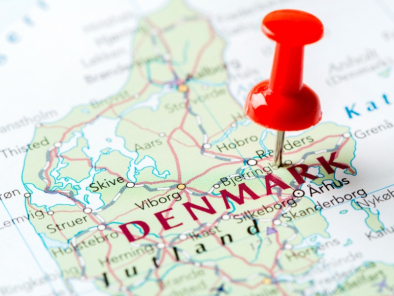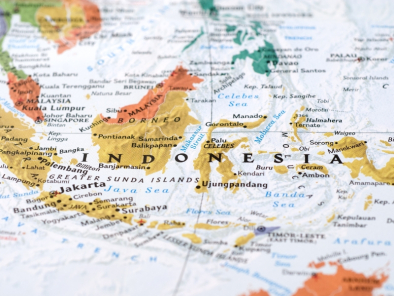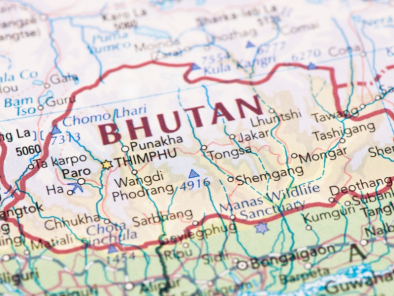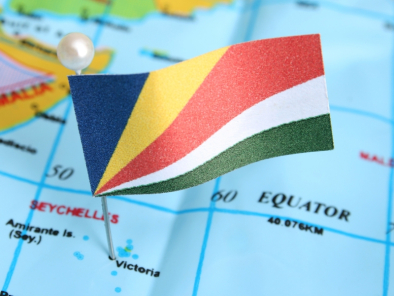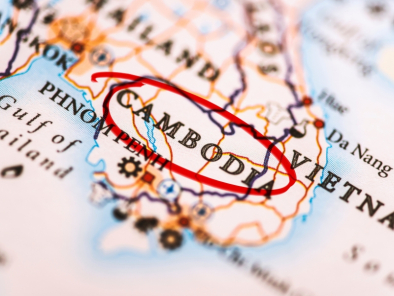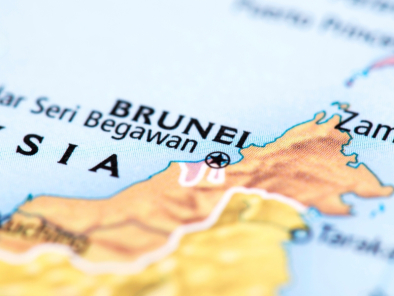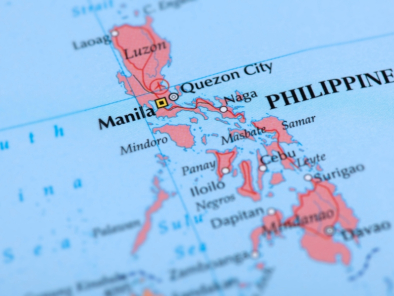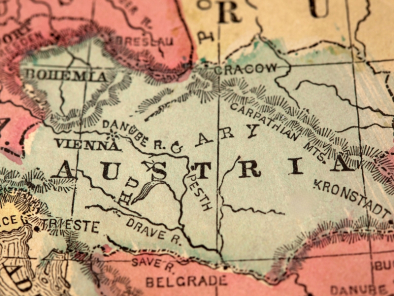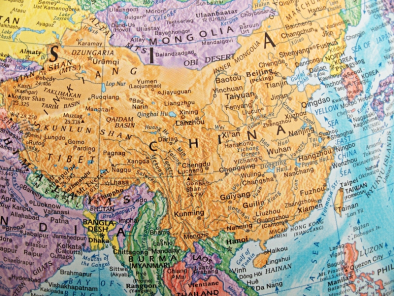HOW TO GET THERE : International Airport : Copenhagen is the International Gateways to Denmark.
Finnair has good connections to Denmark
via Helsinki.
Approx. flying time is 11. 30 hrs. GETTING
AROUND : Air : There are regular
airlinks from Copenhagen to international
destinations, while domestic links radiate from Copenhagen's central hub. Flights can be
made between most major cities in the country. Internal flights are
usually of very short duration (less than an hour) and represent a great
saving in time above the road and ferry network. They are not always cheap
however. Train : Denmark
has a very good and reliable rail network, run by the State Railway
Danske Statsbaner (DSB). Trains are
extremely modern with the Intercity service providing fastest links
across the country. InterRegional (IR) services are also used although these
tend to be slower. Take note that all Intercity services require you to
reserve a seat in advance. The
ScanRail Flexi Pass is valid for unlimited rail travel with selected
rail providers through Scandinavian countries. Eurail and InterRail
passes are also valid in Denmark.
Bus : The train
network in Denmark
outshines the bus, but for local travel you'll find the bus very
efficient. What's more, the integrated transport system means that your train
ticket will usually be valid for the immediate local bus zone at your
destination. City
transport works on a zonal system. You should purchase your ticket
before boarding and stamp it either at the stop or at the machine at the
entrance to the bus or tram. On-the-spot fines are payable for failure to
produce a validated ticket on demand. Copenhagen
offers a particularly good range of tourist and travelcards that make using
public transport extremely easy. CURRENCY : Denmark's unit of
currency is the Danish krone. Although it is internationally labeled as DKK,
it is displayed as kr on price tags and other price indications within the
country. DKK1 = 100 øre. The
Danske Bank DB is the largest and most prevalent highstreet bank in Denmark. BUISNESS : Rough banking hour
standards
Monday to Friday: 9:30 to 16:00/17:00 (up to 18:00 on Thursdays)
Saturdays and Sundays: Closed Shops
in Denmark
generally open 09h30-17h30 or 18h00 each day. On weekends shopping
centres will close at 17h00 on Saturdays. Smaller shops may close earlier, at
around 14h00 on Saturdays. Sunday shopping is not widespread. CLIMATE : Denmark experiences
changeable weather throughout its core territory, due to its maritime
climate. Rainfall is quite evenly spread throughout the year and you should
take wet weather clothing whenever you visit. Temperatures in winter can get
quite cold, although not when compared to other Scandinavian nations. An
average temperature of around -4°C to -5°C is normal in January and
February. The best times to visit are June, July and August. TIME : Denmark is 4 hours 30 minutes
behind India. ELECTRICITY
: Electricity
supply is 230 volts throughout Denmark. DIALIING
CODE: International
Dialling Code : 45 Area
codes: | There
are no city codes in Denmark.
Dial the complete eight-digit number whenever you are ringing. |
TIPS : Taxes,
service charges and gratuity are included in the bill and no
further gratuity is expected. LANGUAGE : Danish is the national tongue. English & German
are commonly spoken. INFORMATIVE
WEBSITE : www.visitdenmark.com CITIES : COPENHAGEN : Copenhagen is the
largest city in Scandinavia and Denmark's capital and spiritual centrepoint
- but the city bears the responsibility with an effortless grace and
impeccable Nordic style. Accomodation
Options in Copenhagen
: Although
there are a few hotels around the airport and in the suburbs, the vast
majority of the 80 or so hotels in Copenhagen
are within the city itself. The Nyhavn district is one of the most
popular areas to stay, being the most tourist-oriented part of the city, and
well situated for sightseeing as well as restaurants, bars and so on.
However, Copenhagen
is in the process of revitalising some of its harbourside areas too,
and this is where you'll find some of the city's most stylish modern
developments. Alternatively try the Frederiksberg
district, which has a great range of shops, restaurants and entertainment
venues and is only a short walk from City Hall. It is here you will find the Avenue,
a modern hotel with warm inviting rooms and a stylish restaurant on the
ground floor. the Island Hotel
is the latest addition to the Copenhagen
hotel scene, a stark, ultra-modern building, located, as the name suggests,
on its own manmade island. Must – Sees
: Tivoli : Tivoli Garden is easily the best-known attraction in Copenhagen,
and is located right next to the main train station for easy access for
day-trippers from all over the country. The
garden was first established in 1843,
inspired largely by the Vauxhall
Gardens of Victorian
London. The Tivoli
is a far classier kind of affair, with the fairground attractions
complemented by live music and cultural events. There are loads of venues
contained within the park, all offering a range of live performances, many of which are free. There are also a
number of highly regarded restaurants
offering a range of cuisine covering all price ranges. The garden is
especially wonderful at night, when parts of it are lit up by fireworks and
thousands of lamps and paper lanterns.
Open: Sun-Wed 11h00-23h00; Thu & Sat 11h00-00h00; Fri 11h00-01h00
(Apr-Sep). The park opens in November and December for the Christmas Market.
Admission: DKK75, adults; DKK35, children. Tel: +45 33-15-1001 Amalienborg
: The
city's main palace, Amalienborg, is made up of four identical rococo buildings surrounding the
octagonal Amalienborg Square.
Designed for four noble families of the 18th century the palaces are known
individually as Christian VII's Mansion, Christian VIII's Mansion, Frederik
VIII's Mansion and Christian IX's Mansion.The fantastic equestrian centrepiece is as much
photographed as the palaces that surround it. Reigning monarch Queen Margrethe resides in Frederik
VIII's mansion. When the Queen is at home you can see the guards changing in
the square below with all the pomp of centuries of tradition. Rosenborg Castle : Now
lying in the heart of the city this was once a royal country estate retreat. King Christian IV originally built
the castle in the early-17th century. The Renaissance style can clearly be
seen in the building's architecture. The
castle is notably home to Denmark's
Crown Jewels, which are on
display in the treasure vaults. The building is now mainly a museum dedicated
to the Royal Chronological
Collections of paintings and artefacts relating to various periods in
the Royal Family's history.
Rosenborg Slot. Voldgade 4. Open: Tue-Sun 11h00-14h00 (Jan-Apr &
Nov-Dec); 11h00-15h00 (Oct); 10h00-16h00 (May & Sep); 10h00-17h00
(Jun-Aug). Admission: DKK65. Tel: +45 33-15-3286. Excursions :
The Little
Mermaid : The Little
Mermaid Statue is one of Copenhagen's most visited landmarks. It is
located near the cruise ship pier of Langelinie. The
sculpture was put up in 1913, and has since then been the symbol of Denmark. Like
the Eiffel tower in Paris and the statue of
liberty in New York both have been very
important for the two cities, so has the Little Mermaid been important for Copenhagen! The Great Belt Suspension Bridge
: No
matter where you are in Denmark it is worth deliberately scheduling an
excursion that involves travelling over the Great Belt Suspension Bridge,
undoubtedly one of the most impressive engineering feats of the last century anywhere in the world. The
bridge's central span of 1624m is the second longest suspension bridge on
earth and the complete bridge length of 6790m is just one part of the 18km
road and rail connection between the islands of Funen and Zeeland.
The
construction is truly amazing with higher towers than the famous Golden Gate
in San Francisco.
Driving over the Great Belt provides some of the most spectacular photo opportunities in Europe,
particularly if the weather is fine when the views stretch across the sound
between the two islands. Odense : On
the island of Funen,
Odense is most famous as being the city of Hans
Christian Andersen, with the famous fairytale
writer spending his formative years here. His childhood home is now open to
visitors and is always a popular draw, while the Hans Christian Andersen
museum contains many objects related to the writer as well as some rarer
prints and samples of his books. But there is more to discover in Odense than this, the city
has a fascinating history that
is well worth discovering. The 14th-century cathedral is one of the most
impressive Gothic structures in the nation. Roskilde and the Viking Ship
Museum : Once
the capital of Denmark, Roskilde
is Zeeland's only other city of note besides present day capital Copenhagen. The ancient
city is still a picturesque town, particularly in the centre, and is
dominated by the spectacular 14th-century
Cathedral (Roskilde Domkirche), the resting-place for nearly 40 of Denmark's former Kings and Queens. However
the biggest draw for tourists is the Viking Ship
Museum (Tel: +45
46-30-0200) with its centrepiece of five genuine Viking ships retrieved from
the waters of the Roskilde
fjord. A recent addition to the displays in the museum is the "Viking Island" where you can see Viking
ships being made in the traditional manner by craftsmen. Helsingor : On
Zeeland lies Helsingor, one of the country's
most interesting historic towns. The medieval buildings that form the main
attractions include the Carmelite
Monastery, widely regarded as one of the best-preserved 15th-century
examples of the Gothic style in existence. You can also clearly see Sweden, barely a mile away across the sound,
from the town.However, it isn't for its natural beauty or the medieval town
centre that visitors flock to Helsingor, but for its castle Kronborg Slot
- more popularly known as "Elsinore".
Many people visiting believe this to be the Elsinore of Shakespeare's Hamlet,
and certainly the magnificent Renaissance building. FOOD : Denmark's
most outstanding contribution to world cuisine is the smørrebrød, or
open sandwich, which can be served with any number of "fillings"
that are generally visually pleasing as well as tasting good. It's also worth
trying the national dish of meatballs (frikadeller) with boiled or
mashed potatoes. SHOPPING
: Best Areas
There is one place to shop in Copenhagen,
and that's the Strøget - an impressive 3.2km-long pedestrianised
thoroughfare made up of five streets. It is here where the main stores of Copenhagen are located,
along with plenty of cafés for the foot-weary. At the top end of the Strøget
you'll find the designer stores including Prada, Chanel and Gianni Versace
among others. It is towards this end too that the massive edifice of Magasin
is to be found, Northern Europe's biggest
department store. Towards
the harbour lies the Royal District, an area of exclusive antique and
furniture shops where only the rich can go with anything other than window
shopping in mind. More exclusivity can be found off the Strøget in the Grønnegade
quarter. Unique and quaint little stores abound, with the emphasis on
clothing Markets
The Tivoli Christmas Market is Copenhagen's
most famous. For a whole month in the holiday season the gardens are turned
into a massive festive market selling all manner of items. Coal braziers keep
the shoppers warm as they wander round stalls selling tree ornaments, candle
sticks and assorted Christmas knick-knacks. If you're after something
specifically from Copenhagen, you should
consider one or more of the following: Royal Copenhagen porcelain,
Scandinavian Crystal
and handknitted clothing. Sweater
Market is
a good place to find handknitted Scandinavian style jumpers at knockdown
prices and further along the Strøget there is more than one outlet selling
both crystal and porcelain. The
other thing Denmark
is famous for is the silver jewellery of Georg Jensen. The designer
inspired a whole style of silvercraft and the shop that bears his name is the
most famous silversmiths in the world.
| 